Jaeger-LeCoultre Jubilee Collection 180 years – Tribute to Antoine LeCoultre
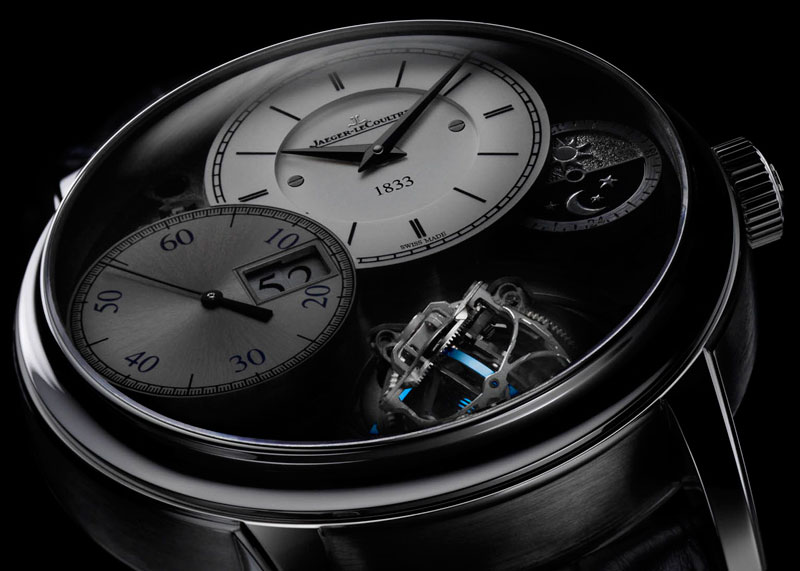
Ok…. How do we do this?? Where do we start?? I suggest you sit back, take a deep breath, set aside anything you might have seen in the past couple of years, hold tight and enjoy the following three (Yes, THREE!!) timepieces by Le Grande Maison: Jaeger-LeCoultre.
Jaeger-LeCoultre was founded in the Swiss Vallée de Joux region back in 1833, and for you quick thinkers that means that this year they exist 180 years. Now who can let that go by unattended? Exactly, no one. They have released a trio of absolutely stunning timepieces that boggle the mind and all comprehensible senses. Not just one timepiece to celebrate their birthday, but three extra special and highly exclusive creations.

First of, and this takes another deep breath just to pronounce correctly, is the Jaeger-LeCoultre Master Grande Tradition Gyrotourbillon 3 Jubilee. This creation is part of the legendary collection known as Hybris Mechanica. The collection is known for being the absolute pinnacle of what JLC is capable of, and what they have to offer. Very desirable, very limited, very complicated, and yes also very expensive.
The Gyrotourbillon 3 Jubilee is inspired by pocket watches dating from the 19th century. It is the third creation fitted with JLC’s gyrotourbillon, but it is the very first flying gyrotourbillon. To understand what a flying tourbillon is, one must first have a clue to what a gyrotourbillon or a tourbillon actually is. The tourbillon, invented by Abraham-Louis Breguet in 1795, was designed to equalize errors in the balance wheel, hair-spring and escapement when placed in a vertical position. The tourbillon is usually mounted between two bridges, and rotates once every minute. When placed on multiple axes, like the gyrotourbillon, errors in more then just the vertical position can be corrected.
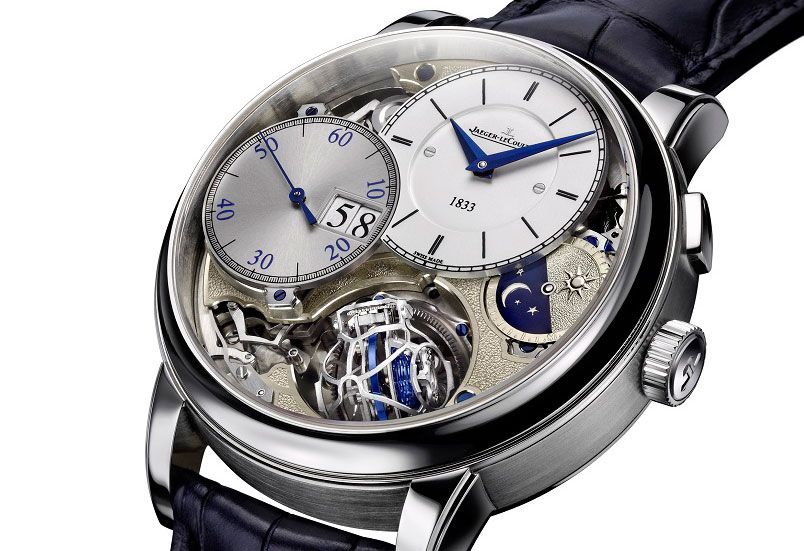
A flying tourbillon is held in place on only one side, and is usually cantilevered. It allows for a clear view of the complication. The gyrotourbillon however, takes it one step further. The tourbillon is installed inside two ultra light aluminum carriages, the outside one rotating once every sixty seconds, the inner one once every 24. It makes the entire structure independent of the actual position of the watch. The tourbillon in this watch is built with a blued gold balance wheel, and a spherical hair-spring. The mesmerizing rotations almost make the structure seem afloat inside the watch, like it is suspended in a vacuum.
The rotations of the gyrotourbillon are accompanied by a chronograph with an instant digital display at 9 o’clock. This digital counter, displaying anything from 00 to 59, tells the minutes that have passed after activating the monopusher at 2 o’clock. The chronograph seconds are displayed by the subdial encasing the digital output. All this comprises the silvered opaline dial. To finish the complex front side of the watch, JLC placed a day and night indicator at 3 o’clock.
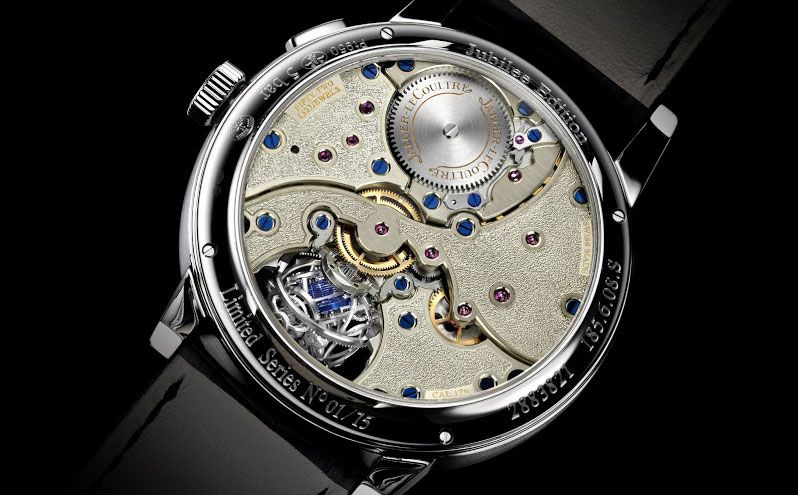
The rather calm looking backside of the watch shows meticulously decorated German Silver bridges and a second look at the gyrotourbillon structure. Caliber 176 inside this timepiece is hand wound and operates at 21,600 bph. It is housed in an extra white platinum case, and attached to a dark blue leather strap with double folding buckle. It will be available in a production run of no more then 15, numbered, pieces.
The second timepiece presented in the “Tribute to Antoine LeCoultre” collection, commemorating 180 years of Jaeger-LeCoultre, is the Master Grande Tradition Tourbillon Cylindrique à Quantième Perpétual Jubilee. That takes almost two gasps of air, but who minds that when viewing this beauty?
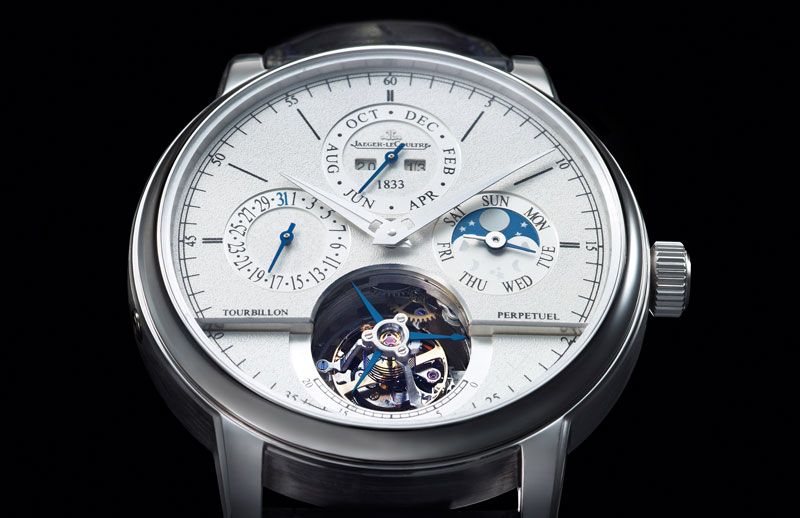
Another flying tourbillon, this time no gyrotourbillon, inside another extra white platinum case. Platinum seems to be the material of choice of the anniversary collection here, but that is not a bad thing at all. The case houses the JLC 985 automatic movement, which consists of 431 parts. The movement powers a tourbillon (at 6 o’clock) with a cylindrical balance-spring.
The calendar’s subdials and indicators display the date, day, month and a four-digit year indication, which is visible through two apertures. The subdial at 12 o’clock indicates the month of the year with a small blued hand pointing either to an abbreviation of the month or a dot, and has the two apertures for the year-indicator. At 3 o’clock, the day of the week is visualized. This subdial also displays a moon phase indication in a traditional manner. A third subdial, at 9 o’clock, displays the date with another small blued hand. The small hands and black transferred markers are strikingly distinguishable against the silver grained dial.
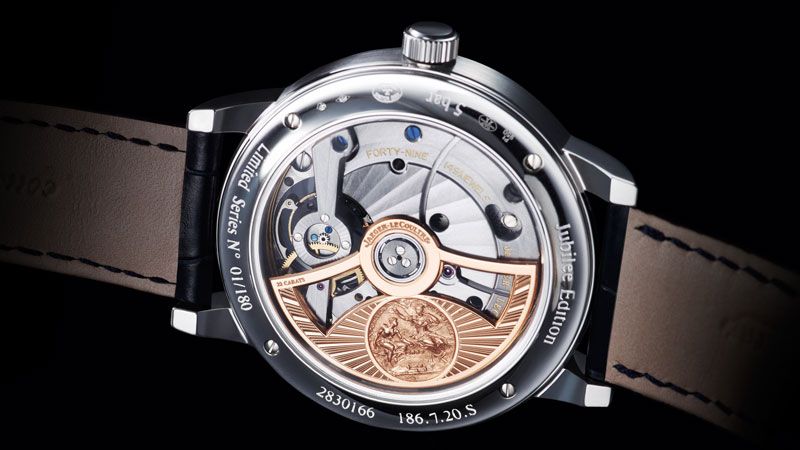
The movement, containing 49 jewels and operating at 28,800 bph, has a power reserve of 48 hours. The case housing all this marvelous mechanical wizardry is made of 950 platinum. This creation is one of the finest complications from the Master Grande Tradition collection, and will be available in a limited production run of 180 pieces.
The final celebratory timepiece JLC introduces might be the most sedated in terms of looks but packs some incredible craftsmanship in its ultra-slim case. It is dubbed the Jaeger LeCoultre Master Ultra Thin Jubilee, much more pronounceable then the other two. The short name befits the watch perfectly, and gives a good indication what this creation is all about.
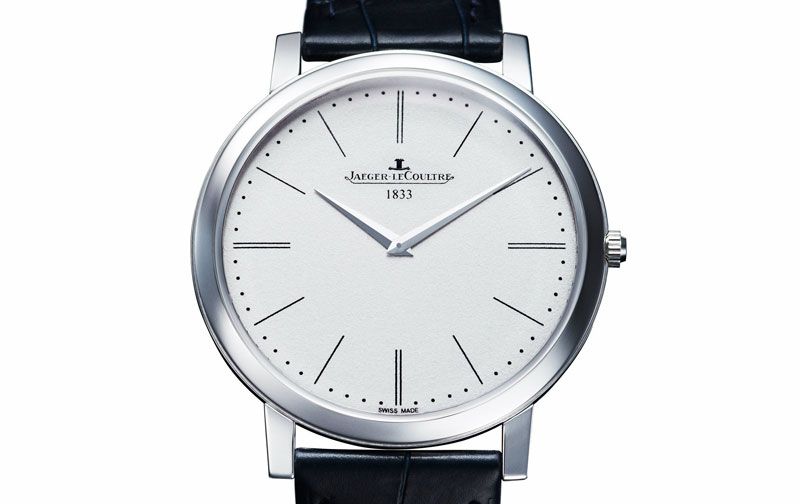
The Master Ultra Thin Jubilee measures a nice 39mm in diameter and only 4,05mm in height, making it the world’s thinnest mechanical watch!! The knife shaped case houses the world’s thinnest manually wound movement, caliber 849, comprising of 123 parts, measuring just 1,85mm in height. JLC may lay claim to the title of flattest manually wound, mechanical wristwatch in existence just as they still hold the title for thinnest mechanical, manually wound pocket watch (since 1907). Like the Piaget Emperador Coussin Minute Repeater we discussed the other day, another ultra-thin record presented at this year’s SIHH.
The movement is placed in a 950 platinum case, completing the trio perfectly. It operates at the rate of 21,600 bph, and offers 35 hours of power. The silvered dial with black transferred hour markers and Dauphine hands is as simple as it is elegant. The case is, just like the other two Jubilee models, strapped to a blue alligator strap, but this one comes with a pin buckle.

The Master Ultra Thin Jubilee is an ardent tribute to the pioneer Jaeger LeCoultre is when it comes to ultra thin watch making. When it comes to watch making in general, JLC is taking the next step with this trio of timepieces. The difference in complexity is a true display of what a powerhouse like JLC is capable of, not just on one level but on several.
For more information regarding the “Tribute to Antoine LeCoultre” collection, or Jaeger-LeCoultre in general, please visit their website or their Facebook-page.
This article is written by Robin Nooij, contributing writer for Monochrome Watches.



